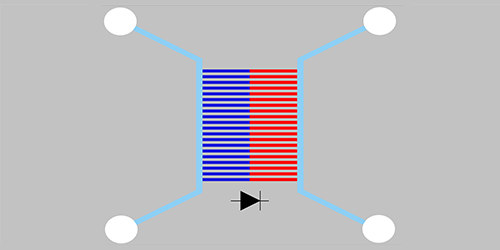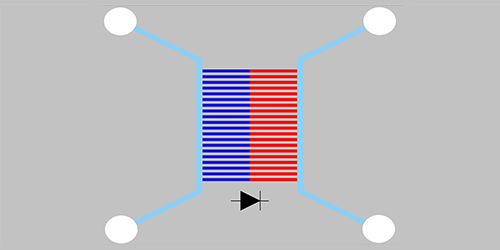A Diode for Fluids
A diode is a common electronic component that restricts current flow in one direction. Researchers have developed a microfluidic device that produces this “one way” action with fluids. This fluid diode is an array of nanochannels with openings that are hydrophilic (water-attracting) on one side and hydrophobic (water-repelling) on the other. Because there are no moving parts, this device could be easily integrated into lab-on-a-chip technologies.
Fluid diodes can manipulate flow streams in micro- and nanofluidic devices. They can, for example, prevent contamination between reaction vessels. Microvalves can perform as diodes, but they are active (i.e., need to be powered) and have moving parts that can break down. Researchers have developed passive devices with direction-dependent flow, but they only work for special fluids, like gels and polymers, with unusual viscous properties.
Zhigang Li and colleagues from the Hong Kong University of Science and Technology have created a passive diode for fluids with conventional viscosity, like water or blood. The device consists of 200 nanochannels, each having one end made with hydrophilic silicon dioxide, the other end with hydrophobic aluminum oxide. The nanochannels are aligned in parallel between two larger microchannels filled with deionized water. The team varied the pressure across the diode and measured the resulting flow. For pressures below 6 atmospheres, only forward flow (hydrophilic to hydrophobic) occurred. Backward flow was restricted by molecular repulsion at the hydrophobic entrance. At higher pressure, water did flow in the backward direction but at a slower rate than forward. This so-called rectification behavior continued up to pressures of 30 atmospheres, at which point the flows in both directions became equal.
This research is published in Physical Review Letters
–Michael Schirber





